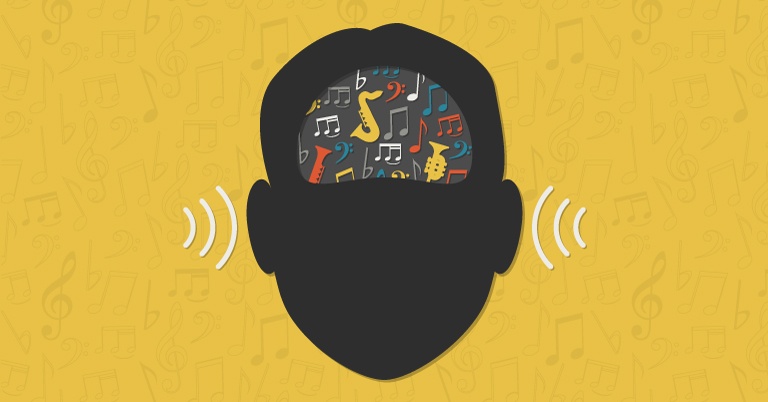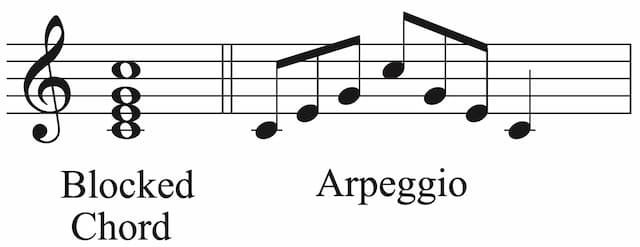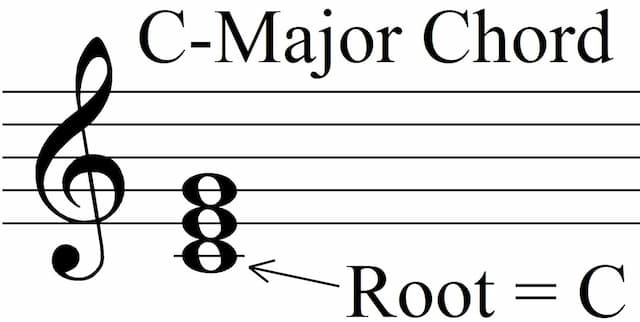5 Easy Ways to Include Ear Training in Your Daily Routine

Any good musician knows that daily practice is the fastest way to see improvement in your musical skills. Practicing just 30 minutes a day is exponentially more effective than practicing for a few hours once a week.
When it comes to difficult skills in music ear training is at the top of the list. Daily practice is crucial. But many students struggle to find daily ear training practice routines that work for them. Many don’t know what to practice, or they practice the wrong methods, which end up being totally ineffective and holding them back. After all—there’s no definitive “ear training book” that tells you exactly what to practice! Here is where the Use Your Ear method can step in and make a significant difference in your ear training journey.
In this post, we’ll break down five different ways that you can include ear training in your daily practice. With these approaches, you’ll start to see improvements in just a few weeks, and you’ll actually enjoy incorporating ear training practice into your routine!
What is Ear Training?
Before we dive into our tips, let’s briefly talk about what ear training is and how to train your ear for music. Ear training is the process of developing your inner ear, so that you can identify and reproduce notes, chords, etc. on the fly, without thinking about it. It allows you to analyze melodies and chord progressions, improvise, write music, and opens up a whole world of musical and creative freedom.
Ear training requires repetition of listening and singing. You don’t need to be a “singer” to practice ear training, but you should be willing to use your voice, even humming at a very soft volume is fine (if you don’t want to be heard). It doesn’t take a lot of time to train your ear—just 30 minutes a day is usually enough to see improvement.
Let’s dig into the tips!

Pitch Matching Tasks
Pitch matching is the ability to hear a note and reproduce that note with your own voice—without the aid of an instrument. It is one of the fundamental building blocks of musical ear training. If you can’t match a pitch, you won’t be able to analyze the pitch either.
Here are some great pitch-matching exercises that you can do every day:
- Sing along to your favorite melody (or just hum!)
- Listen to a short melody line and repeat it back
- Match a single pitch (from a keyboard, piano app, or another instrument)
- Match one note from a chord (this is more difficult than the previous tasks, so better to start simple)
- Match each note from a chord (this is even more difficult)
The great thing about practicing pitch matching is that you can do it basically anywhere! In the car, while washing dishes, walking the dog, etc. If you have a music player or piano app on your phone, you can use it to generate pitches and match them with your voice wherever you are.
The most important thing to remember about pitch matching is that you must sing (or hum) the note out loud. You don’t have to be a great singer at all, you can hum at a very soft volume. What matters is that you should be able to hear the sound of your voice. Matching the pitches on an instrument defeats the purpose because the pitches are not coming from inside you.

Sing Scales and Arpeggios
The next step up from pitch matching is singing pitches within scales or arpeggios. Arpeggios are chords broken into individual notes. Scales and arpeggios are the building blocks of Western Music, and cementing their sound in your brain will not only help you start to recognize them melodically but will also help you to identify chord progressions and enhance your melodic creativity later.
We recommend you start with the major scale, and we recommend you use solfeggio syllables to sing it. Solfeggio is a naming system that gives a unique, single-syllable name to each degree of the scale. For a major scale, it looks like this:
DO RE MI FA SOL LA TI DO
Using solfeggio to sing up and down the major scale will help you start to understand the different sonic sensations that each note assumes within the scale. Once you can sing the major scale, move on to the minor scale. You can also sing arpeggiated chords by picking notes out of the scale.
For example:
DO MI SOL MI DO
This is the I chord. It contains the tonic of the key and is typically where songs in Western Music resolve to or “land.” Once you have it firmly in your ear, you’ll start to recognize it when you listen to music. As little as it may seem, this is a big step in your ear training journey! It’s the foundation of your musicality. Keep reading to learn why this seemingly insignificant skill is so important.
As with pitch matching, you can practice singing scales and arpeggios anywhere. If you like, you can give yourself a starting pitch using a piano app on your phone. You can also practice them at the piano or at your instrument—just make sure you are singing the pitches from your own head, without relying on the instrument to help you.

Learn to Identify the Tonic
Speaking of the I chord—let’s talk about the tonic! The tonic is the note in the scale that all other notes are hierarchically dependent on. All other notes in the scale want to resolve to the tonic to some extent. The tonic is the first (and last) degree of the scale (or DO). You can think of it as the “gravitational center” of the key.
Learning to identify the tonic will help you begin to build the structure and framework of the major scale inside your head. Once you start to become familiar with this framework, you will be able to orient yourself in a tonality and quickly recognize the notes and chords within it. The easiest way to start identifying the tonic is to start hearing it in a major scale. You can do this yourself at a keyboard or your instrument—-play the whole major scale up and down, and then sing DO.
Once you can do this, try identifying the tonic after hearing a simple chord progression. For example, play a I IV V progression and then sing DO. Once you can do this, start listening for the tonic in your favorite melodies and chord progressions. You can do this anywhere—just pull up your music app, listen to any song, and try to sing the tonic.
This might be tricky at first, but you’ll be surprised how quickly you’ll be able to do it with just a few minutes of practice every day.

Chord Progression Ear Training
Recognizing chord progressions is one of the most difficult aspects of ear training in music, but you can easily practice it and see improvement in your chord ear training in just 30 minutes a day.
Before you can start analyzing chord progressions, you should be familiar with identifying the tonic of the key and the root of a chord. This is where practicing your arpeggios comes in very useful. The root of the chord is the main note from which the chord is built. For example:
DO MI SOL
The root here is DO. This also happens to be the tonic of the key, but don’t get those two things confused. The root is just the main note of the chord (whereas the tonic of key is the “main note” of the key). In the following chord:
SOL TI RE
The root is SOL.
Start by listening to simple songs (nursery rhymes are good) and try to hear the root of each new chord, which is usually the note played by the bass. If you can do that, you’re basically doing chord analysis! Another great way to practice is to get with a friend and play chord progressions for each other on a piano or guitar. Again, start simple (with just a I IV V progression) and gradually increase complexity.
Once you have some basic ability with hearing chord progressions, you can also practice this skill anywhere! Listen to your favorite songs and try to follow the chord progressions.

Transcribe Melodies by Ear
This is the skill that most students struggle with when it comes to ear training. The good news is, if you’ve been practicing all the other skills on this list, transcribing melodies will become much easier because your relative pitch skills will have a solid foundation.
Transcription isn’t exactly a skill you can practice anywhere, as it requires writing down notes on paper. However, you can practice recognizing notes and melodies inside your head anywhere, and this is an incredibly important aspect of learning how to transcribe them. Listen to a melody and practice identifying Do (the tonic note). From there, see if you can figure out the scale degrees of the other notes in the melody. Once you have that, practice singing along with the melody using the solfeggio syllables.
Practicing recognizing melodies mentally will also improve your note recognition skills (recognizing the scale degree of each note) and your chord recognition skills. It also helps to improve your short-term musical memory, which is another foundational skill important for melodic recognition.
Transcription is challenging, but it becomes easier to do when you have worked on the sub-skills that are needed for it. These are things like matching pitch, recognizing the tonic note and other scale degrees, and improving your short-term musical memory. However, you must make sure you are practicing the sub-skill that you need the most help with. For instance, if you struggle with retaining short melodies due to limited musical memory, you should focus on targeted exercises to address this specific problem. On the other hand, if you have difficulty recognizing notes, you should practice a separate set of exercises designed to enhance your note recognition skills.
Where many students go wrong is simply practicing things they are already good at over and over again. You won’t make progress in this way. Identifying the sub-skills where you are weak is a skill all on its own—and that’s where Use Your Ear can really help you. Read on to find out how we can guide you down a path that will address your specific needs and weak spots.

How to Choose the Ear Training Method That Will Suit You
Figuring out what to practice is the hardest part of putting together an effective ear training routine. This is because no one exercise fits all. The same exercise can be perfect for one person and way too advanced (thus frustrating and detrimental) for someone else. A student can have issues in a specific sub-skill and be great at another one, whereas the next student can have the opposite situation.
Fortunately, Use Your Ear can take some of the difficulty out of the process. We have put together a highly effective ear training for musicians course that will guide you through all the skills listed above (and more) in a methodical way, and give you access to the best daily exercises for ear training tailored to your current skill level and sticking points.
Our ear training course is the only science-based, step-by-step method for ear training available, and has already helped countless musicians achieve an advanced level of musicality. We're so excited to help you do the same!
If you’re ready to take your musicianship to the next level, take a look at our Relative Pitch Video Course. In the course, you will be guided along a science-based, step-by-step path, tailored to your specific level. Our course is designed to be effective no matter where you start. With our guidance, you'll be amazed at how much progress you make within just a few months. Don’t take our word for it, check out our students’ improvement.
Not quite ready to commit to a course? Want to see what it’s all about before you sign up? Check out our Free Ear Training Workshop to get a practical introduction to the Use Your Ear method. In this free, three-hour online workshop, you’ll be given exclusive exercises to practice, and you’ll gain a deeper understanding of the scientific concepts behind our method.
This workshop includes clear explanations of the most important scientific findings related to the human perception of musical pitch. You will be able to walk away after assessing your current level and understanding how to set up your own ear training routine based on that — and, more importantly, you’ll know what exercises to absolutely avoid!
We also offer 1-on-1 Lessons for those of you looking for the experience of a private tutor. You’ll be paired with an instructor who is qualified in teaching the Use Your Ear method. You’ll receive immediate feedback on your current level and weaknesses, and you’ll get 1-on-1 help improving your skills and working on problem areas.
Conclusion
When it comes to difficult skills in music ear training certainly qualifies! Building an effective daily ear training practice routine is not easy. But we can help you, no matter your age or current level! With just 20 to 30 minutes of practice a day, you’ll start to see improvement in your relative pitch skills and melodic analysis in just a few weeks.
Don’t wait! It’s never too late to improve your ear. Get in touch today and let’s get started.

